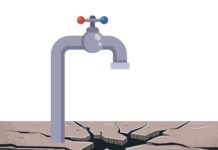Every winter, meteorologists from the UK, Ireland, and the Netherlands announce a list of names to name storms; this 2025-26 season starts with Amy, Brahm and Chandra.
The names were chosen from more than 50,000 public suggestions, and Amy was the most popular girl’s name suggested by the public. Other symbolic options include Dave (in memory of her loud-snoring husband) and Violet – after a premature but strong baby girl.
Why Name Storms?
Specific short names help avoid confusion in weather reports, especially when two or more storms are active at the same time. Previously, they were designated by numbers or latitude-longitude positions, which were inconvenient and prone to errors. Using names simplifies communication among forecasters, the media, authorities, and residents.
Names also humanise storms, making people take informational messages more seriously and encouraging them to prepare. For example, after Floris, 93% of people in the orange warning zone knew about the impending danger, and 83% took preparation steps.
History: From Saints and Animals to Human Names
The first storms were named after elements, saints, or ships. In Australia, meteorologist Clement Wragge (1887–1907) was the first to give weather systems human names, sometimes after politicians he wanted to satirize.
The United States officially adopted female names in 1953, and later added male names in 1979 after criticism of sexism. The names have rotated ever since.
The World Metereological Organisation (WMO) maintains lists of names for different regions, which are rotated every six years. If a storm has been particularly destructive, its name is “removed” (removed) from the list as a mark of respect.
European System: Amy, Wubbo and Others
Since 2015, the Met Office, together with the Irish and Dutch meteorological services, has been naming winter storms. The names are chosen alphabetically, excluding Q, U, X, Y and Z, and are published in early September, in anticipation of the start of the hurricane season.
Criteria for choosing names include:
- Ease of pronunciation;
- Lack of ambiguous or controversial associations;
- Understanding across all language areas;
- Cultural neutrality or respect.
Why it Matters?
- Improved public preparedness. A name is a signal. People respond faster to “Storm Josh” or “Storm Amy” than to a number or coordinates.
- Improved communication in critical scenarios. The media, rescuers and authorities speak the same language: “Storm Amy is coming” is clearer than “Storm 02B”.
- Psychological effect: A name evokes an emotional response, helps to remember the warning better and take action.
- Stories and memory: Renaming a name after devastating events is a tribute to respect, helps to avoid traumatic associations.
The naming system is a great example of how a simple idea (a name as a symbol) can save lives. Community involvement (people suggest names of their loved ones, pets) makes the system more humane, more memorable, and increases responsibility.
I hope that other regions, for example, Eastern Europe or the Balkans will join similar schemes for blizzards, forest fires or floods, where names will also help save lives and create awareness.
The Economics of Storm Naming
Storm names are important not only to the public, but also to businesses.
Insurance companies, airlines, and delivery services use them to plan operations, assess risks, and minimise losses. Clearly identifying a threat allows for early route adjustments, flight suspensions, and customer notifications.
Communication errors are costly: an example is Hurricane Katrina in 2005, when insufficient information about the storm’s strength and path led to delays in evacuation and billions of dollars in losses for businesses and the government. Storm naming is economically viable, reducing financial losses and improving response efficiency.
The Future of Storm Naming
As technology advances, it may be possible to use AI generators or neural networks to create storm names, ensuring uniqueness and speed of list preparation.
Another alternative could be geographic names, such as "Storm North Sea", which immediately indicate the region of impact. However, involving the public in choosing names increases trust and attention to warnings, making the system more humane.
In my opinion, the best option is a combined approach: professional criteria and public suggestions so that the names are safe, easy to pronounce, and at the same time nostalgic to the native population.
Read the Latest Articles on DET!
Relations in the Rear View For Now: The U.S.-India Diplomatic Crisis
A New Wave of Bioethics: The Frontiers of Genetic Engineering
Social Capital Lives On: The Story of Germany and Russia





